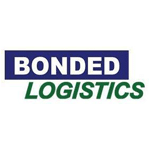Efficient On-Demand Warehousing: Save on Storage and Shipping Costs
In today's fast-paced and increasingly competitive logistics landscape, businesses are constantly seeking innovative solutions to optimize their supply chain operations while reducing costs. On-demand warehousing has emerged as a flexible, scalable solution that addresses many of the challenges faced by modern logistics professionals. By leveraging this dynamic approach to storage and distribution, companies can significantly reduce their overhead expenses while maintaining exceptional service levels. This article explores the fundamental concepts, benefits, and implementation strategies of on-demand warehousing, providing you with actionable insights to enhance your logistics operations and achieve substantial cost savings.
Understanding On-Demand Warehousing: A Comprehensive Overview
On-demand warehousing represents a paradigm shift in how businesses approach storage and distribution needs. This flexible model allows companies to secure warehouse space and fulfillment services as needed, without the long-term commitments traditionally associated with leasing facilities. Instead of investing substantial capital in fixed warehousing infrastructure, businesses can tap into a network of available spaces, paying only for what they use when they need it. This approach aligns perfectly with the increasing need for agility in supply chain operations, allowing organizations to rapidly adapt to market fluctuations, seasonal demands, and unexpected business challenges. The model functions similarly to cloud computing in the IT sector, providing scalable resources that can be accessed on-demand rather than requiring permanent infrastructure investments.
The market for on-demand warehousing has experienced remarkable growth in recent years, driven by several converging factors. E-commerce expansion has created unprecedented pressure on businesses to optimize their distribution networks while maintaining cost efficiency. According to recent industry reports, the global on-demand warehousing market is projected to grow at a compound annual growth rate (CAGR) of approximately 11.5% through 2027, reaching a valuation of over $25 billion. This growth is particularly evident in markets with high e-commerce penetration and developed logistics infrastructure, such as North America and Western Europe. Technology platforms have emerged to facilitate connections between businesses seeking temporary storage solutions and warehouse operators with excess capacity, creating a thriving marketplace for flexible warehousing arrangements.
The fundamental value proposition of on-demand warehousing centers on its ability to transform fixed costs into variable expenses. Traditional warehousing requires significant upfront investment in facilities, equipment, and personnel, regardless of actual utilization rates. This often results in inefficiencies during slow periods when resources sit idle but costs remain constant. On-demand models eliminate this inefficiency by allowing businesses to scale their warehousing footprint in direct proportion to their actual needs. This shift from capital-intensive fixed costs to more flexible operational expenses represents a significant advantage for businesses operating in volatile markets or those experiencing rapid growth. The model is particularly beneficial for small and medium-sized enterprises that may lack the resources for major warehousing investments but still need reliable distribution capabilities.
Key Benefits of On-Demand Warehousing for Cost Savings
On-demand warehousing delivers substantial overhead cost reductions through multiple mechanisms that directly impact a company's bottom line. By eliminating the need for long-term lease commitments, businesses avoid the burden of paying for unused space during slow periods, which can account for 20-30% of traditional warehousing costs. Fixed expenses such as facility maintenance, security, utilities, and property taxes become the responsibility of the warehouse provider rather than the client business. Labor costs, often representing 50-70% of warehousing expenses, can be significantly reduced as staffing adjustments become the warehouse provider's responsibility. Furthermore, on-demand solutions eliminate the substantial capital expenditures typically associated with establishing new warehouse facilities, which can range from $50 to $150 per square foot depending on location and specifications, allowing companies to preserve cash flow and invest in other strategic initiatives.
The impact of on-demand warehousing extends beyond direct cost savings to create significant improvements in inventory management efficiency. Businesses gain the ability to position inventory strategically across multiple locations, reducing average delivery distances and cutting transportation costs by 15-25% in many cases. This distributed inventory model enables more responsive fulfillment operations, with some companies reporting order processing time reductions of up to 40% after implementing on-demand solutions. The flexible nature of on-demand warehousing also allows businesses to adapt quickly to seasonal fluctuations and demand spikes without maintaining excess capacity year-round. This responsive approach to inventory positioning leads to lower carrying costs, reduced risk of obsolescence, and improved working capital efficiency, with some organizations reporting inventory carrying cost reductions of 10-15% after transitioning to on-demand models.
On-demand warehousing creates compelling opportunities for businesses to optimize their fulfillment networks and delivery promises. By accessing warehousing space in strategic locations closer to end customers, companies can significantly reduce shipping distances and delivery timeframes. This network optimization can reduce average shipping costs by 20-30% while simultaneously improving delivery speed—a critical competitive advantage in today's market where consumer expectations for rapid fulfillment continue to escalate. The ability to quickly establish regional distribution points allows businesses to offer more competitive shipping options without substantial infrastructure investments. Additionally, on-demand warehousing provides built-in redundancy and risk mitigation, as companies can quickly relocate inventory or establish alternative fulfillment points in response to disruptions, natural disasters, or unexpected demand shifts.
Comparing Traditional vs. On-Demand Warehousing Models
Traditional warehousing models and on-demand solutions represent fundamentally different approaches to cost structures and operational management. Traditional warehousing typically involves substantial fixed costs, including long-term leases (often 3-10 years), property taxes, insurance, maintenance, security systems, and full-time staff regardless of warehouse utilization. These fixed expenses continue regardless of business volume fluctuations, creating financial inefficiencies during slow periods. In contrast, on-demand warehousing converts these fixed costs to variable expenses that scale directly with actual usage needs. Businesses pay only for the space, labor, and services they require at any given time, typically through pricing models based on pallet positions, square footage, or handling fees. This flexibility allows companies to align warehousing expenses with revenue generation, maintaining healthier margins throughout business cycles. Financial analysis shows that businesses with seasonal demand patterns or rapid growth trajectories can reduce their overall warehousing costs by 20-40% by transitioning to on-demand models.
The operational flexibility afforded by on-demand warehousing creates distinct advantages compared to traditional approaches. Traditional warehousing requires businesses to forecast space needs years in advance and make capacity decisions based on peak demand periods, resulting in significant inefficiencies during normal operations. Geographic expansion in traditional models requires substantial planning and capital investment in each new market. On-demand warehousing, by contrast, allows companies to rapidly scale storage capacity up or down in response to actual market conditions, often within days rather than months. Geographic expansion becomes significantly more accessible, as businesses can establish regional distribution points without long-term commitments. This flexibility extends to technology systems as well, with many on-demand providers offering sophisticated warehouse management systems that integrate with existing business platforms, eliminating the need for substantial technology investments when expanding warehousing operations.
Real-world implementation of on-demand warehousing has generated impressive results across various industries. A mid-sized electronics retailer facing seasonal demand fluctuations of 300% during the holiday season adopted an on-demand warehousing strategy, securing additional capacity only during peak periods. This approach reduced their annual warehousing costs by 32% while improving delivery times by 28% through strategic inventory positioning. Similarly, a growing e-commerce furniture company leveraged on-demand warehousing to expand from three to eleven regional distribution points in eighteen months, reducing average shipping distances by 62% and cutting transportation costs by 41% without adding permanent infrastructure. A specialty food manufacturer used on-demand warehousing to test new market entry strategies, establishing temporary distribution in three potential regions before committing to permanent facilities, reducing market entry costs by 65% and accelerating their expansion timeline by over nine months.
Implementing On-Demand Warehousing Solutions: Best Practices
Successful integration of on-demand warehousing with existing warehouse management systems requires thoughtful planning and execution. Begin by conducting a comprehensive assessment of your current systems, identifying integration points and potential data exchange requirements between your enterprise resource planning (ERP), inventory management, and order management platforms. Prioritize on-demand warehousing partners whose systems offer standard API connections or pre-built integrations with popular platforms like SAP, Oracle, or Shopify. Establish clear data synchronization protocols to maintain inventory visibility across your network, with real-time or near-real-time updates to prevent fulfillment errors. Implement a phased integration approach, starting with non-critical inventory categories or specific regions to minimize disruption to ongoing operations. Develop standardized operating procedures (SOPs) that address how orders are allocated between traditional and on-demand facilities, ensuring consistent customer experience regardless of fulfillment location. Finally, establish comprehensive performance metrics that provide visibility into operational efficiency across your entire warehousing network, including both traditional and on-demand facilities.
Selecting the right on-demand warehousing partners represents a critical decision that directly impacts operational success. Begin the evaluation process by clearly defining your specific requirements, including geographic coverage needs, special handling capabilities (temperature control, hazardous materials, oversized items), technology requirements, and service level expectations. Evaluate potential partners based on their warehouse network density in your target markets, as this directly impacts delivery speed and transportation costs. Thoroughly assess their technology platforms, focusing on the sophistication of their inventory management systems, visibility tools, and integration capabilities. Examine their experience with similar products or industries, as specialized handling knowledge can significantly impact operational quality. Request detailed information about their pricing models, looking for transparency and alignment with your business patterns. Investigate their scalability both in terms of handling volume fluctuations and supporting geographic expansion. Finally, conduct site visits to key facilities and request references from existing clients with similar requirements to verify operational capabilities and service quality.
Effective implementation of on-demand warehousing requires careful attention to inventory management and distribution network optimization. Start by segmenting your inventory based on demand patterns, value, and fulfillment requirements to determine which products are best suited for on-demand facilities. Consider implementing a hybrid approach where fast-moving items are maintained in traditional facilities while seasonal, specialized, or regional products utilize on-demand solutions. Leverage data analytics to identify optimal inventory positioning across your network, balancing transportation costs against service level requirements. Establish clear inventory ownership and responsibility protocols, particularly for managing stock levels, reordering, and quality control in on-demand facilities. Develop contingency plans for rapidly scaling or relocating inventory in response to demand shifts or disruptions. Implement regular network analysis to continuously optimize your distribution footprint, adding or removing on-demand locations based on evolving business needs. This dynamic approach to network design allows companies to maintain optimal service levels while minimizing total logistics costs.
Future Trends in the On-Demand Warehousing Market
Technological advancements are rapidly transforming the on-demand warehousing landscape, creating new opportunities for efficiency and cost reduction. Artificial intelligence and machine learning algorithms are increasingly being deployed to optimize inventory placement across distributed warehouse networks, predicting regional demand patterns and automatically adjusting stock levels to minimize transportation costs while maintaining service levels. Warehouse automation technologies, including autonomous mobile robots (AMRs) and automated storage and retrieval systems (AS/RS), are becoming more accessible through on-demand models, allowing businesses to benefit from these efficiency-enhancing technologies without major capital investments. Internet of Things (IoT) sensors throughout warehousing networks are enabling unprecedented visibility into inventory conditions and movements, creating opportunities for predictive maintenance and quality control. Blockchain technology is emerging as a solution for increasing transparency and trust in multi-party warehousing arrangements, providing immutable records of inventory ownership, handling, and chain of custody. These technological innovations are collectively driving down operational costs while improving service capabilities within on-demand warehousing networks.
The integration of on-demand warehousing with broader supply chain technology ecosystems represents a significant trend shaping the industry's future. Transportation management systems (TMS) are increasingly being connected to on-demand warehousing platforms, creating opportunities for dynamic routing optimization based on real-time inventory positions across distributed networks. Advanced demand forecasting systems are leveraging artificial intelligence to predict regional demand patterns, automatically triggering inventory positioning through on-demand warehousing to optimize fulfillment response times. Control tower solutions are expanding to provide unified visibility across complex networks that include both traditional and on-demand facilities, enabling more sophisticated decision-making and exception management. The emergence of supply chain-as-a-service models is blurring traditional boundaries between warehousing, transportation, and fulfillment, creating integrated solutions that allow businesses to outsource entire portions of their supply chain operations while maintaining visibility and control through sophisticated digital interfaces.
Despite its promising trajectory, the on-demand warehousing market faces several challenges that will shape its evolution. Data standardization and system integration complexity remain significant hurdles, particularly for businesses with legacy systems or specialized requirements. Security and compliance concerns become more complex in multi-tenant environments where inventory from different companies shares physical space. Quality control and consistency across distributed warehouse networks present operational challenges, particularly for products with specialized handling requirements. The industry must also navigate evolving regulatory frameworks, particularly regarding labor classification, as many on-demand models rely on flexible staffing arrangements. However, these challenges also create opportunities for innovative solutions. Industry leaders are developing specialized expertise in managing complex, multi-node networks with consistent service levels. Technology providers are creating more sophisticated integration platforms to address compatibility issues. Regulatory expertise is becoming a competitive differentiator for providers who can navigate complex compliance landscapes. As the industry matures, we can expect continued consolidation, with larger platforms acquiring specialized providers to build comprehensive service offerings that address these challenges while delivering the flexibility and cost advantages that make on-demand warehousing attractive.
Conclusion
On-demand warehousing has proven to be a transformative approach for businesses seeking to optimize their storage and distribution operations while significantly reducing costs. By converting fixed expenses into variable costs, companies gain unprecedented flexibility to scale their warehousing footprint in direct response to actual business needs. This adaptability enables more efficient inventory positioning, reduced transportation expenses, and improved customer service through faster delivery capabilities. The comparative advantages over traditional warehousing models are particularly compelling for businesses with seasonal demand patterns, growth ambitions, or those operating in volatile markets. As technology continues to advance and the marketplace matures, on-demand warehousing will likely become an increasingly integral component of optimized supply chain strategies.
For supply chain and logistics professionals, now is the ideal time to evaluate how on-demand warehousing might enhance your operations. Begin by analyzing your current warehousing costs, identifying inefficiencies, and exploring how a more flexible approach could address these challenges. Consider starting with a pilot program focused on specific product categories or regional markets to gain experience with the model while minimizing disruption to existing operations. As the marketplace continues to evolve, those who effectively leverage these flexible solutions will gain significant competitive advantages through enhanced cost efficiency and operational agility.
Frequently Asked Questions (FAQ)
Q1: What is on-demand warehousing and how does it reduce logistics costs?
On-demand warehousing is a flexible storage solution that allows businesses to rent space as needed, rather than committing to long-term leases. This model helps reduce logistics costs by aligning storage needs with demand, minimizing wasted space, and optimizing inventory management. Companies can scale operations up or down without significant capital investment, leading to more efficient use of resources and reduced overhead costs. This adaptability is particularly beneficial for businesses with fluctuating inventory levels or seasonal demand patterns, as they can secure additional capacity during peak periods while avoiding payments for unused space during slower times. Many companies report total warehousing cost reductions of 20-40% after implementing on-demand strategies.
Q2: How does on-demand warehousing differ from traditional warehousing models?
Traditional warehousing typically involves long-term leases (often 3-10 years), substantial capital investments, and fixed costs regardless of utilization rates. On-demand warehousing operates on a flexible, pay-for-what-you-use model that converts these fixed costs into variable expenses. Traditional models require businesses to forecast needs years in advance and make capacity decisions based on peak demand, while on-demand solutions allow for rapid scaling based on actual requirements. Geographic expansion in traditional models requires significant investment in each new market, whereas on-demand warehousing enables quick entry into new regions with minimal commitment. Additionally, technology and labor costs in traditional models are borne entirely by the business, while on-demand providers typically include these capabilities as part of their service offering.
Q3: What types of businesses benefit most from on-demand warehousing solutions?
While on-demand warehousing can benefit many organizations, it provides particular advantages for businesses with seasonal demand patterns, rapid growth trajectories, or those entering new markets. E-commerce companies often leverage on-demand warehousing to manage holiday season surges without maintaining excess capacity year-round. Startups and growing businesses find the model attractive as it allows them to scale operations without committing to long-term leases or significant capital expenditures. Companies with national or international distribution needs benefit from accessing strategic warehouse locations that reduce shipping distances and costs. Product categories with unpredictable demand or special handling requirements can also be well-suited for on-demand solutions, as they provide flexibility without requiring specialized infrastructure investments.
Q4: How can I integrate on-demand warehousing with my existing supply chain operations?
Successful integration begins with a thorough assessment of your current systems and clearly defined objectives. Start by identifying integration points between your existing inventory management, order management, and ERP systems and the on-demand provider's technology platform. Prioritize providers with robust API capabilities or pre-built connections to common business systems. Implement a phased approach, beginning with less critical inventory categories or specific regions to minimize operational risks. Develop clear protocols for inventory allocation, order routing, and exception handling across your network. Establish comprehensive performance metrics that provide visibility into operations across both traditional and on-demand facilities. Many businesses find success with a hybrid model, using traditional warehousing for predictable, high-volume inventory while leveraging on-demand solutions for seasonal, regional, or specialized requirements.
Q5: What future trends will shape the on-demand warehousing industry?
The on-demand warehousing industry is evolving rapidly, driven by technological innovation and changing market demands. Artificial intelligence and machine learning are increasingly being deployed to optimize inventory placement and predict regional demand patterns. Automation technologies are becoming more accessible through on-demand models, allowing businesses to benefit from these efficiency-enhancing systems without major capital investments. Integration with broader supply chain technology ecosystems is creating more seamless connections between warehousing, transportation, and order fulfillment. Sustainability considerations are gaining prominence, with more businesses seeking warehousing partners that can help reduce their environmental footprint through optimized transportation networks and energy-efficient facilities. As the market matures, we can expect increased consolidation among providers and more sophisticated service offerings that address specialized industry requirements.













